When you buy a product through our links below, we may earn money from our affiliate partners to help support the site. However, this does not affect our evaluation or recommendation of each product. See our list of partners & how we get paid here. You can also learn our process for reviewing tennis gear here.
The best overall tennis racquet for beginners is the Head TI S6. This racquet has a large head size, light frame, and affordable price making it great for beginners. However, you may need a different racquet based on your goals, age, fitness level, and more. For serious beginners, I recommend the Prince Ripstick 100 which will allow for more rapid improvement.
Below I’ll review the 9 best tennis racquets for beginners on the market today, including the pros, cons, and alternatives of each. You’ll also find a buyer’s guide to help you choose the right racquet for you.
Here’s a quick summary of what you need to know about beginner tennis racquets.
- Beginner tennis racquets have a larger head size, often 100 to 115 square inches or more, which gives them a bigger sweet spot.
- Beginner tennis racquets are lightweight so they’re easy to swing, typically under 11 oz. depending on your athletic ability and fitness level.
- Most tennis racquet brands make racquets for all skill levels, including beginners.
Our recommendations are based on over 20 years of experience playing tennis, testing racquets, and coaching beginners to advanced players. We’ve play-tested and reviewed racquets from the best brands and analyzed them based on their head size, weight, string pattern, power, control, spin, and comfort to help you understand how they will perform on the court.
Leave a comment at the bottom of this page for more personalized racquet recommendations from one of our experts.
List of the Best Beginner Tennis Racquets
The table below shows our list of the 9 best tennis racquets for beginners. We reviewed each racquet in more detail below.
Click the links below to order your racquet from Tennis Warehouse.
| Category | Racquet |
|---|---|
| Best Overall Beginner Racquet | Head TI S6 Jump to Review |
| Best Beginner Racquet for Power | Babolat Pure Drive 110 Jump to Review |
| Best Racquet for Serious Beginners | Prince Ripstick 100 Jump to Review |
| Best Beginner Racquet for Comfort | Wilson Clash 108 Jump to Review |
| Best Beginner Racquet for Control | Head Boom Team Jump to Review |
| Great Lightweight Beginner Racquet | Wilson Hyper Hammer 5.3 Jump to Review |
| Best Cheap Racquet for Beginners | Wilson Tour Slam Racquet Jump to Review |
| Great for Beginners in High School | Babolat Boost Drive Jump to Review |
| Best Beginner Racquet for Seniors | Prince O3 Legacy 120 Jump to Review |
Reviews of the Top 9 Beginner Tennis Racquets
Below are our nine picks for the best tennis racquets for beginners available today. All nine racquets are considered adult tennis racquets. You’ll see detailed descriptions, specifications, the relative price (on a 1-3 scale), and our recommended USTA rating level for the racquets. We also included lists of pros and cons with an image of the racquet itself.
#1 – Head TI S6: Best Overall
For older teens and adults learning how to play tennis, this is the best beginner tennis racquet under 100 dollars.
Its titanium structure means it is lightweight (8.9 oz. strung) so you can control it easily from the baseline and avoid tennis elbow. You’ll be able to generate power on your shots since this racquet has a large frame and has its weight balanced towards the head. The large frame size of 115 square inches means it has a huge sweet spot in case you mishit the ball.
The 16×19 string pattern also makes this one of the best tennis racquets for spin. You’ll be able to generate topspin on your shots as you improve your game. The main strings on this racquet spread wider as they move further from the handle. We found that in combination with the frame technology, this gives the racquet excellent feel.
This racquet is also the best-value tennis racquet if you plan to become a more avid recreational player. It’s one of the more affordable gifts for tennis players beginning their tennis journey. However, we don’t recommend this racquet for advanced players as it is bulky and difficult to maneuver at the net for a fast-paced game.
Read other Head tennis racquet reviews.
- Specs: 115 sq. inch head size | 8.9 oz.
- Price: $
- USTA Rating: Up to 3.5
Pros
- Great power from the baseline
- Lightweight – prevent tennis elbow and injury
- Great feel with a large sweet spot
- Reasonable price
Cons
- Bulky and difficult to maneuver at the net
- Not for high-level intermediate players
#2 – Babolat Pure Drive 110: Best for Power
The Babolat Pure Drive is one of the best tennis racquets for power on the market. This Pure Drive 110 is the perfect adult beginner tennis racquet if you want a quality, powerful racquet to improve fast.
This version of the Babolat Pure Drive is lightweight and easy to maneuver at the net, with a large head (110 sq. inches) for a bigger sweet spot. That, combined with the wide frame will help generate power. The string pattern helps generate spin so you can continue using it as you continue to improve your game. Also, if you plan to become an intermediate player, you won’t have to change racquets.
Read other Babolat tennis racquet reviews.
- Specs: 110 sq. inch head size | 9.5 oz.
- Price: $$$
- USTA Rating: Up to 4.0
Pros
- Excellent power for groundstrokes
- Big sweet spot
- More control than most beginner racquets
- Great for learning how to hit topspin
- Good for intermediate players
Cons
- Costs more than most starter racquets
- Not for high level intermediate players
3 Steps to Find the Perfect Tennis Racquet for Your Game
Free checklist with 27 racquet recommendations
#3 – Prince Ripstick 100: Best for Serious Beginners
The Prince Ripstick is a great tennis racquet for almost any skill level. Its easy maneuverability and power make it great for beginners, while the open string pattern and stability allow for faster swings from intermediate players.
There are two versions of the Ripstick that vary by weight (11.2 oz. vs 10.4 oz.). Most physically fit players can start with the heavier version which will allow you to improve faster. The 10.4 oz. Ripstick is our lightweight pick for the best tennis racquet for women, and also works great for younger teens. This racquet’s 16×18 string pattern makes it great for learning topspin, a skill required to advance your game. The 100 square inch frame is comfortable and offers good power and stability. The unique O-ports minimize wind resistance helping you swing faster too.
We recommend this racquet for serious beginners who want the best chance to improve their tennis game.
Read other Prince tennis racquet reviews.
- Specs: 100 sq. inch head size | 11.2 oz.
- Price: $$
- USTA Rating: Up to 4.5
Pros
- Great for beginners and intermediate players
- Allows a player to improve fast
- Great comfort and power
- Better control than most beginner racquets
- Fantastic for learning topspin
Cons
- Smaller frame than some beginner racquets
- More expensive than others on this list
#4 – Wilson Clash 108: Best for Comfort
The Wilson Clash tennis racquets are excellent for beginners and high-level intermediate players. With the Clash 108, you will be able to improve fast!
This racquet’s 108 square inch head creates a big sweet spot, perfect for beginners. It’s a flexible racquet with great control and comfort. The extra .25 inches in length helps to add power on your serve and groundstrokes. Beginners who want to learn how to hit with topspin will find the Clash 108 provides plenty of spin.
This is one of the most forgiving, comfortable tennis racquets on the market. It’s more expensive than most beginner racquets. But, it’s worth the investment if you do plan to play tennis often and want to improve fast.
Read other Wilson tennis racquet reviews.
- Specs: 108 sq. inch head size | 10.4 oz.
- Price: $$$
- USTA Rating: Up to 4.0
Pros
- Great beginner racquet for control
- Allows for fast improvement
- Good mobility for doubles
- Head size and added length provide more power
- The most flexible and comfortable beginner racquet (easy on the arm)
Cons
- More expensive than most beginner racquets

#5 – Head Boom Team: Best for Control
The Head Boom is a newer racquet from Head, and the Team version is great for athletic adults who want an entry-level racquet. It’s a great “tweener” racquet that will allow you to improve to an intermediate player quickly.
This racquet has a 102 inch head size making it great for both beginners and intermediates. Its lightweight, 10.2-ounce frame is easy to handle as well. The 16×19 string pattern offers good power and can help you learn topspin as you advance. The frame is built for controlled power with a relatively narrow beam for a beginner racquet.
For players who are relatively athletic and physically strong with good hand-eye coordination, this is a great racquet. This is certainly one of the top beginner or low-level intermediate racquets on the market to help players place and control their shots.
- Specs: 102 sq. inch head size | 10.2 oz.
- Price: $$$
- USTA Rating: Up to 4.0
Pros
- Best beginner racquet for control
- Great transition racquet for beginner to intermediate
- Allows for fast improvement
- Excellent comfort & feel
- Solid power & spin as you improve
Cons
- Smaller head size than many beginner racquets
Stop paying full price for tennis gear! Get deals on shoes, racquets & more up to 70% off.
#6 – Wilson Hyper Hammer 5.3: Lightweight Racquet
For players who want a balance of control and power, Wilson has created this great racquet in their line of hammer racquet series.
This oversized racquet (110 square inches) has a tighter string pattern (18×20) than most beginner racquets. This will help you to place your shots better all over the court. At 9 ounces, it is lightweight but still heavy enough to transition your game to the next level.
While we wouldn’t recommend this for advanced or upper-level intermediate players, this is a great starter racquet that will give you a few years to improve your game even if you play often.
- Specs: 110 sq. inch head size | 9 oz.
- Price: $
- USTA Rating: Up to 4.0
Pros
- Good for intermediate players
- String pattern allows for more control and feel
- Good mobility at the net for a beginner
Cons
- Less power than some starter racquets
#7 – Wilson Tour Slam: Best Cheap Racquet for Beginners
If you’re on a very tight budget, or just need a cheap tennis racquet for one event, then we recommend the Wilson racquet below. It is the best value of any under $50 racquet on the market. Wilson is a major, trusted tennis brand and makes quality tennis gear.
This racquet’s 110 square inch head size gives you a large sweet spot and great feel for the value. It is a bit heavy for a beginner racquet at 11.5 oz.
Because of the price, this is also a great way to see if you enjoy tennis without having to spend much. If, however, you plan on playing tennis as a more serious hobby and want to improve to an intermediate player, this racquet is not recommended.
- Specs: 110 sq. inch head size | 11.5 oz.
- Price: $(half)
- USTA Rating: Up to 3.0
Pros
- Budget friendly
- Large head size creates a big sweet spot
- Good power
- Wilson is a trusted brand
Cons
- Not a great racquet to improve your game
#8 – Babolat Boost Drive: Great for High School Players
Players entering high school who want to give tennis a try should definitely consider this racquet. It is a great budget option that will also let the player grow in their game.
This racquet is on the smaller side for beginner racquets at 105 square inches, but it is also more maneuverable aiding in volleys, perfect for the high school doubles player. It also has above-average power and spin capabilities, making it easy to use from the first swing.
Players who get more serious might find this racquet a little too light, but it will still grow with a player into the lower intermediate level. It is also a great racquet for recreational players who don’t want a bulky tennis racquet.
- Specs: 105 sq. inch head size | 9.6 oz.
- Price: $
- USTA Rating: Up to 4.0
Pros
- Good up to low-intermediate players
- Great for high school doubles
- Easy to swing
- Solid power & spin
Cons
- Smaller head size provides less forgiveness
#9 – Prince O3 Legacy 120: Best for Seniors
Senior players looking to get into tennis, whether it be for exercise or the social aspect, should seriously consider the Prince O3 Legacy 120. It features Prince’s unique grommetless O3 technology to help minimize harsh vibrations and maximize comfort.
This racquet’s 120-square-inch head provides excellent power and stability. It offers great forgiveness and allows for slower, more controlled swings that seniors typically use. The 16×19 string pattern paired with the large head size also provides good spin potential, both on serve and from the baseline.
The extended length (27.25 inches) does make this racquet less maneuverable, so it is not suited for players who want to swing fast and aggressively.
- Specs: 120 sq. inch head size | 9.7 oz.
- Price: $$
- USTA Rating: Up to 3.5
Pros
- Very comfortable
- Large head size creates a big sweet spot
- Excellent power
- Extended length
Cons
- Not very maneuverable

Buyer’s Guide: How to Choose the Best Tennis Racquet for Beginners
When choosing a tennis racquet as a beginner, you have to remember that there isn’t a perfect racquet for everyone. You’ll need to decide what you need from your racquet to choose the best beginner racquet for your game.
For example, if you need a more powerful racquet then you’ll sacrifice some control.

The two primary factors that should determine the right racquet for beginners are head size and weight.
Here are a few questions to start with.
- Is the racquet for a child or an adult? Anyone over 14 years old can use an adult racquet. Shop junior racquets here.
- Will you need help with more power or control? Power-oriented racquets will have larger head sizes and frames. Racquets built for control will have smaller head sizes
- Do you have good hand-eye coordination? Athletes who play other sports can use a smaller racquet.
- What is your budget? If you’re serious about improving in tennis, you’ll need a higher-quality racquet.
No matter how you answer these questions, you will be able to find a great beginner racquet below.
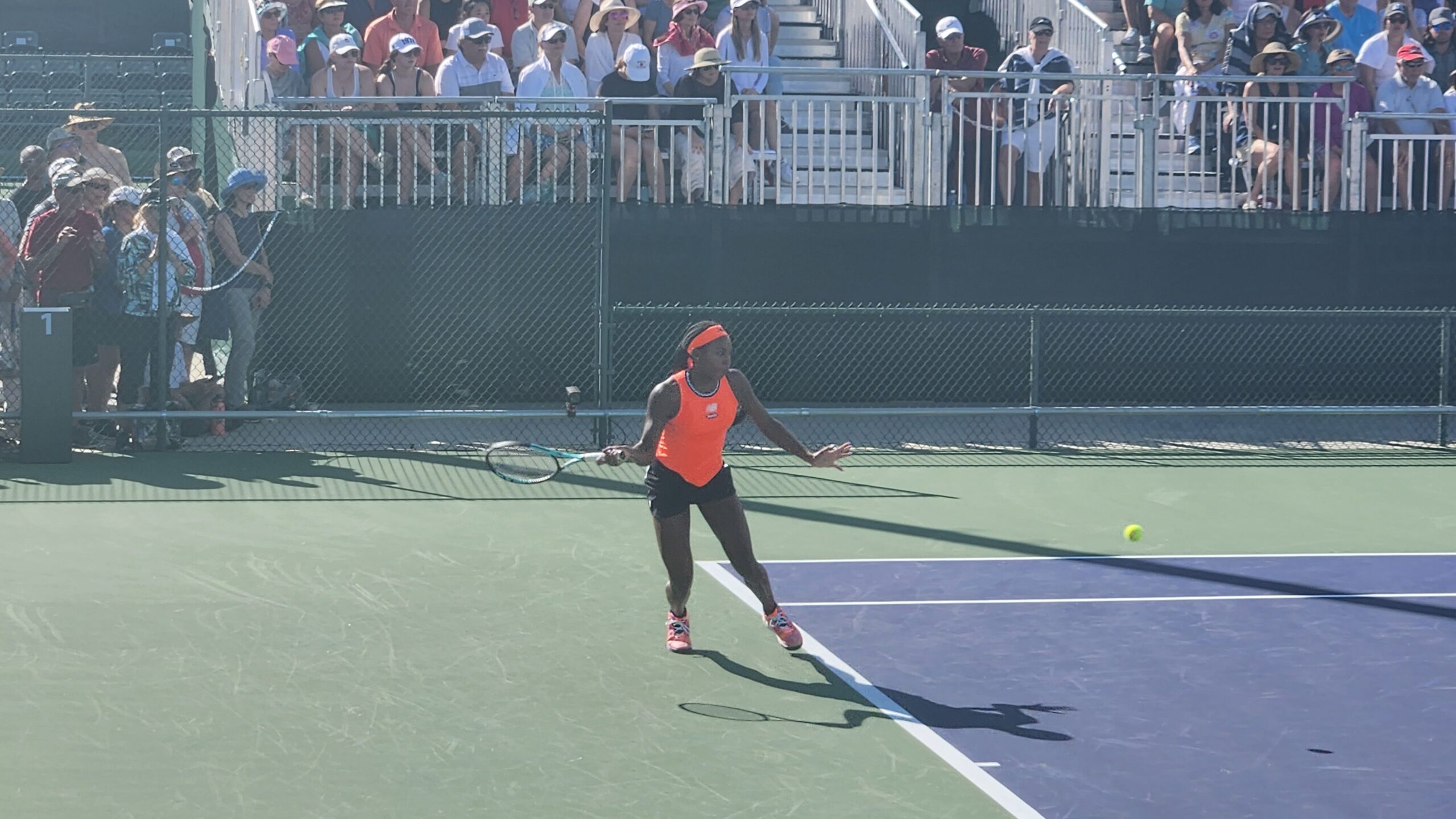
First, you need to understand the main characteristics of tennis racquets and how they affect performance. To illustrate, I’ll go over beginner vs advanced racquets.
3 Steps to Find the Perfect Tennis Racquet for Your Game
Free checklist with 27 racquet recommendations
What is the Difference Between Beginner and Advanced Tennis Racquets?
Beginner racquets generally have larger head sizes and are lighter than advanced racquets.
Beginner racquets can also have a bit thicker frames and be stiffer than advanced racquets. This makes them less arm-friendly.
The table below will give you a general idea of what specifications to look for in a beginner racquet.
Racquet Specification Table Based on Skill Level
Here is a chart that shows tennis racquet specifications for tennis players of different skill levels.
Of course, there will be exceptions to this chart. For example, if you play a lot of other sports that involve hand-eye coordination, then you may not need as much help with power and can use a smaller racquet with a smaller sweet spot.
| Racquet Specifications | Beginner Players Only | Intermediate & Some Beginner | Advanced & Some Intermediate |
|---|---|---|---|
| Head Size (sq. inches) | 107 – 115 | 100 – 110 | 95 – 100 |
| Weight (strung) | Under 11 Ounces | 10.1 – 11.5 Ounces | Over 11 Ounces |
| Price | Under $150 | $100 & up | $150 & up |
| Power vs Control | More Power | Balanced Racquet | More Control |
Note on Racquet Length: Nearly all adult tennis racquets are 27 inches in length. They can go up to 28 inches, but this shouldn’t be a huge factor in your buying decision.
If you’re an athletic, fit adult, you may be able to start with one of the best tennis racquets for intermediate players. This will allow you to improve faster.
The Parts of a Tennis Racquet that Beginners Should Know
Before you choose the right tennis racquet, you should be familiar with the different parts of racquets.

- Handle: The bottom of the racquet that the tennis player holds.
- Grip: The material that goes around the handle. The grip is what makes contact with your hand when playing.
- Throat: The triangle of the racquet, above the grip but below the racquet head.
- Head: The oval-shaped, top of the racquet that holds the strings in place.
- Frame: The structure composing the throat and head of the racquet.
- Strings: The part of the racquet that makes contact with the ball. These can and should be replaced regularly.
In the image below, my right hand is on the grip/handle. My left hand is holding the throat of the tennis racquet.
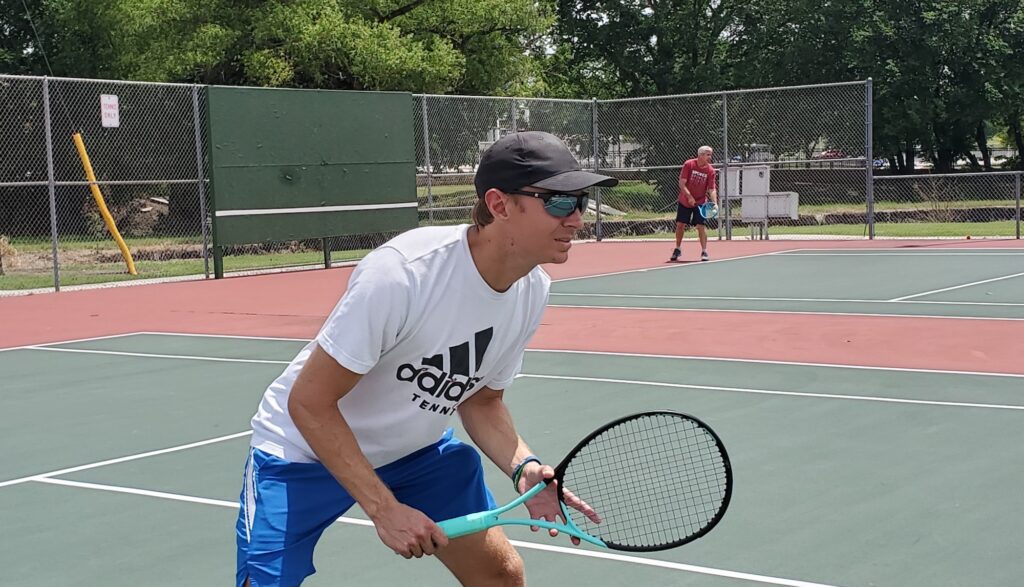
Choosing a Racquet Head Size for Beginner
In general, beginners will want to pick a racquet with a large head size, over 100 square inches, especially if you need help creating power on your shots or you have poor hand-eye coordination. The best tennis racquets for power all have larger frames.
People who are learning tennis do not consistently make contact with the ball in the center of the racquet. A larger frame gives the racquet a bigger sweet spot. This means you can be less precise with your point of contact.
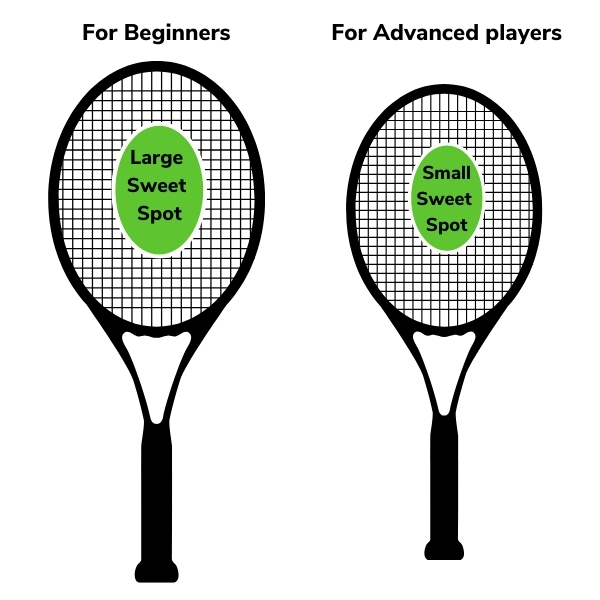
Advanced players can use a small racquet head size because they hit the ball at the same spot on the strings more consistently. Beginners don’t, so they need a larger, more forgiving racquet.
Larger head sizes also help increase power. This allows beginners to swing slowly and under control while still generating power.
Larger Head-Sized Racquets Offer Power & Forgiveness with a Large Sweet Spot (Great for Seniors)
A senior tennis player in their 70s should choose a larger head size, 110 square inches or more. This will maximize the sweet spot and help them hit the strings more often.
The racquet below has a head size of 120 square inches, giving it an enormous sweet spot.
- Best Beginner Racquet for Seniors: Prince O3 Legacy 120
Smaller Head-Sized Racquets Allow for Better Maneuverability & Control (Great For Athletes)
If you play a lot of sports and are physically fit, you will likely have good hand-eye coordination. This means you will need a racquet that helps with control and has good maneuverability. A smaller head size will help with that and allow you to improve fast.
- Best Beginner Racquet for Athletes: Prince Ripstick 100
Choosing the Right Weight for Your Racquet: Maneuverability & Handling vs Stability & Power
Beginner racquets tend to be lighter and easier to handle, while more advanced racquets are heavier.
More weight adds stability and power to a racquet, allowing you to absorb and redirect fast shots more easily. Lighter racquets have better maneuverability and are easier to swing. Since beginners don’t hit the ball fast, it’s generally more important to have a racquet that is easy to handle.
Most beginners should choose a racquet under 11 ounces.
Seniors & Less Physically Strong Adult Beginners Should Use a Light Racquet
Seniors or adult players who aren’t as physically strong and athletic should find a racquet between 9 and 10.5 oz. This will allow you to swing easier and generate racquet head speed.
- Best Lightweight Racquet for Beginners: Wilson Hyper Hammer
Younger, Stronger Adult Beginners Should Use a Heavier Racquet
If you’re younger, physically strong, and athletic, you will want a heavier racquet. This will allow you to improve faster and help you maintain control over your shots. Choose a racquet a bit over 11 oz.
- Best Beginner Racquets for Stability (Heavier): Prince Ripstick 100 or Wilson Clash 108
Choosing the Right Grip Size for Your Racquet (3/8 for Most)
For grip size, you’ll see most racquets come with several options ranging from 4 ⅕ up to 4 ⅝. On the bottom of the racquet, you can find the grip size. Sometimes, there is a number representing the size between 1 and 5 instead of a fraction.
- Most players should use 4⅜ – look for 4⅜ or a 3 on the bottom of the handle.
- If you have small hands, then you can start with a 4¼ (2).
- If you have larger hands, choose a 4½ (4).
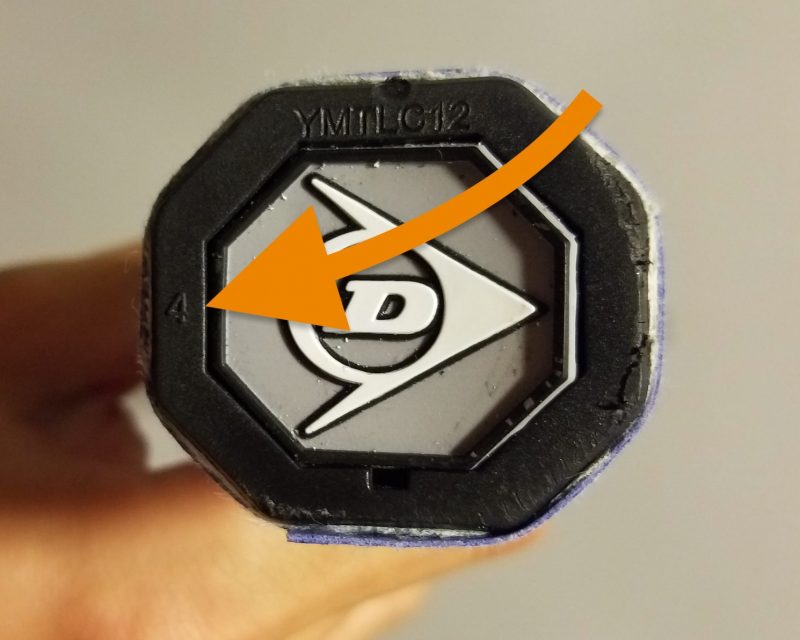
I have a 4 grip size on one of my racquets and a 3 on the other. I use an extra grip on the smaller racquet to make them feel the same and it works great.
So, if you’re unsure, choose the smaller option. If it is too small you can add any of the best tennis overgrips to compensate for the difference. However, if you order it too big, it’s very difficult to customize your tennis racquet with a smaller grip size.
Stop paying full price for tennis gear! Get deals on shoes, racquets & more up to 70% off.
The Best String and Tension for Beginners is Synthetic Gut Around 50-55 lbs
Beginners don’t need to worry about their tennis string type or tension as much. Choosing one of the cheaper best tennis strings on the market is the smartest decision. High-end strings will not affect your performance much as a beginner.
- Choose a relatively inexpensive synthetic gut string at your local tennis shop.
- Tell them to string the racquet with the manufacturer’s recommended tension, usually around 50 to 55 lbs.
The recommended tension will be written on the frame somewhere and will typically give a 10-pound range (ie. 50 – 60 lbs). In this case, just choose the middle (55 lbs).
In general, loose strings will provide more power and a larger sweet spot. Looser is also more helpful in preventing tennis elbow injuries since you won’t have to swing as hard. The best tennis elbow braces can help prevent injury as well. Tighter strings will give you more control, but a smaller sweet spot.
How Much Should I Budget for a Good Racquet?
Budgeting is a big factor in choosing a racquet as well.
- If you’re a serious beginner, you should invest $150 or more in a high-quality racquet that will allow for improvement.
- If you aren’t sure that you’ll keep playing tennis for the long term, you can find a solid racquet for around $100.
The latest versions of best tennis racquets are all over $150. However, you can usually find previous versions of the racquets at a discount. Often, the new version just has a cosmetic change so you’re not buying an inferior product.
Here are the best beginner racquets for each price range.
- Best Cheap Racquet for Beginners: Wilson Tour Slam
- Best Beginner Racquet Under $100: Head TI S6
- Best Beginner Racquets $100 – $150: Babolat Boost Drive, Wilson Hyper Hammer
- Best High-Quality Beginner Racquets ($150 & up): Prince Ripstick 100, Wilson Clash 108, Babolat Pure Drive 110
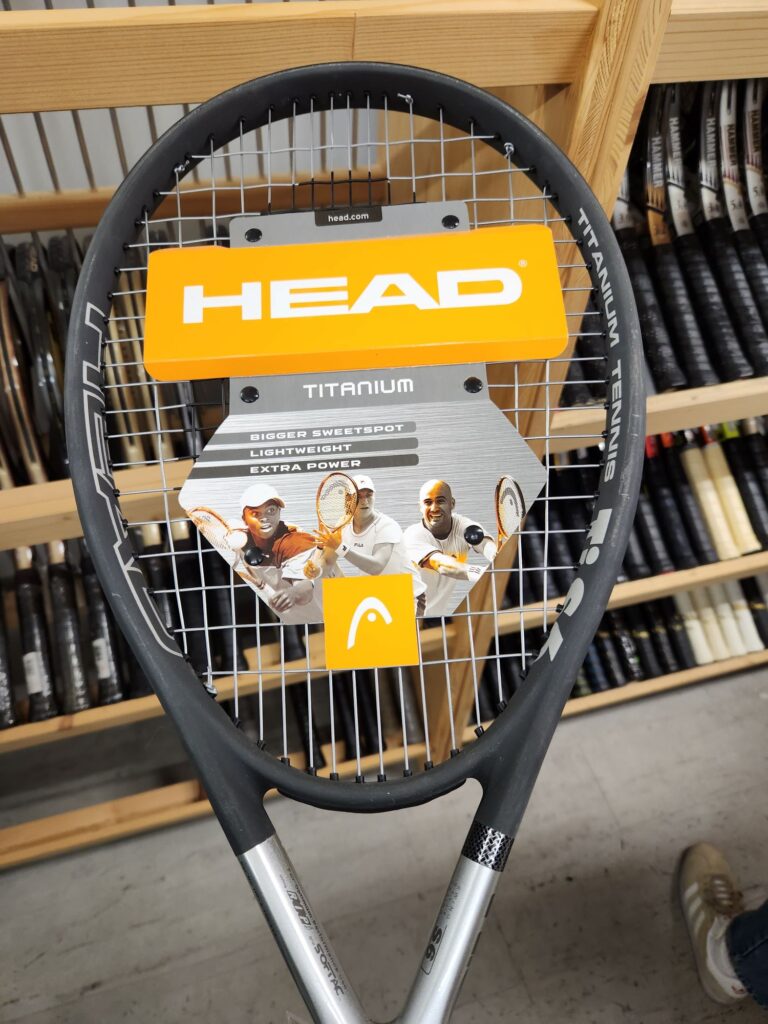
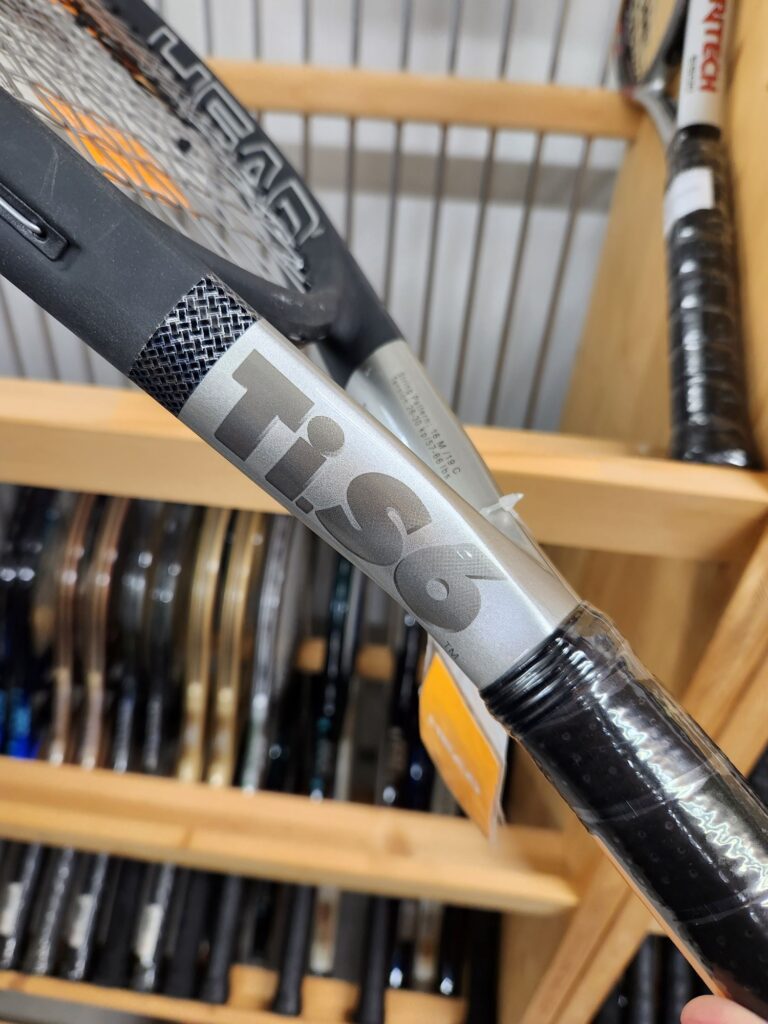
Best Tennis Racquet for Beginner Adults
As discussed above, for adults who are learning to play tennis, you want to start with a racquet over 100 square inches and under 11 ounces.
Racquets with larger head sizes will be more forgiving and make it easier to play tennis. A larger sweet spot and lightweight frame will help you generate power and be easier to handle.
Here are the 3 best starter racquets for adults:
- Best Low-Cost Racquet for Beginner Adults: Head TI S6
- Best High-End Racquet for Beginner Adults: Wilson Clash 108
- Best Racquet for Athletic Beginner Adults: Prince Ripstick 100
Best Tennis Racquet for Female Beginners
Female beginners typically need more help with power and are better at control than men. Women beginner tennis players should look for a powerful racquet over 105 square inches and under 10 ounces.
- Best Overall Tennis Racquet for Female Beginners: Babolat Pure Drive 110
- Best Budget Tennis Racquet for Female Beginners: Head TI S6
Both racquets above provide lots of power with lightweight technology and can help add spin to your shots as you improve.
Best Tennis Racquet for Beginner to Intermediate Players
Beginner tennis players who want to advance to the intermediate level need a racquet that allows for improvement.
Choose a racquet with a generous sweet spot that also helps you develop new skills like topspin. As your game advances, the tennis ball will be coming back faster, so you’ll need a less bulky racquet as well. Choose a racquet between 100 to 105 square inches. This will help you get a good combination of spin, power, control, and maneuverability.
- Best Overall Racquet for Beginner to Intermediate Players: Prince Ripstick 100
- Best Lightweight Racquet for Beginner to Intermediate Players: Head Boom Team
Both racquets above offer plenty of power for a beginner and will allow you to develop control and learn to hit with topspin. See our reviews of the best tennis racquets for intermediate players for more options.
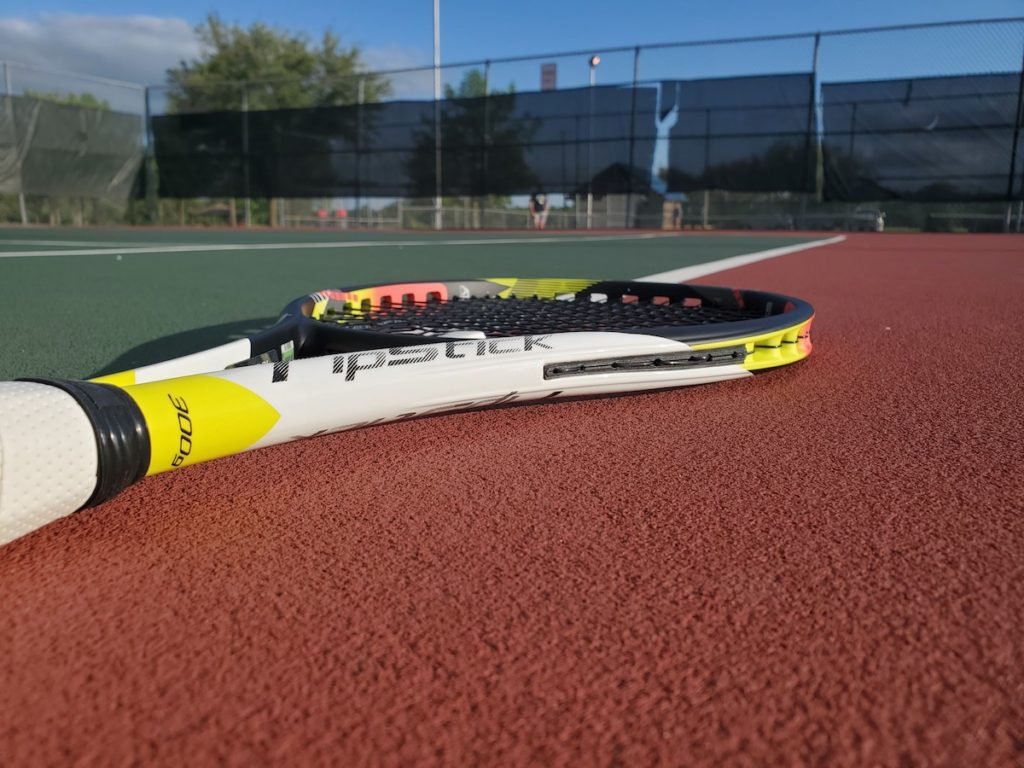
Conclusion: Our Pick for the Top Starter Racquet
With dozens of options on the market, it can be confusing to decide which racquet is best for you. Since most beginner tennis players take slower, more controlled swings, you need a racquet that can provide power. Racquets with a larger head size and sweet spot will also make the game easier and more fun until you improve to the intermediate level.
The Head TI S6 tennis racquet offers a great balance of control and power, feel and spin, that a beginner needs to learn the game of tennis. It also comes at a low price point so you aren’t investing too much into a sport you haven’t yet tried.
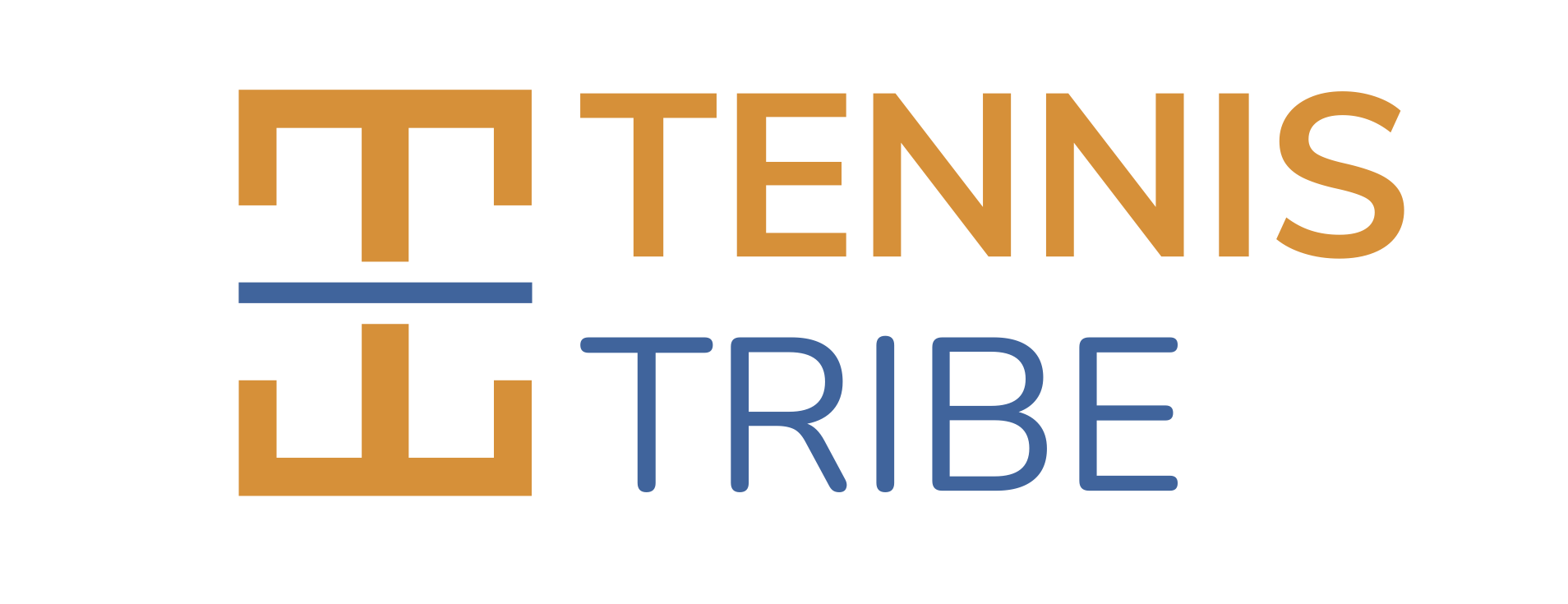
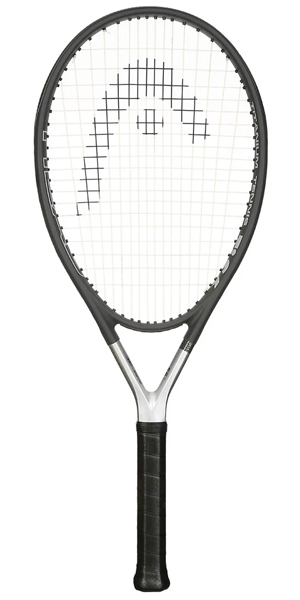
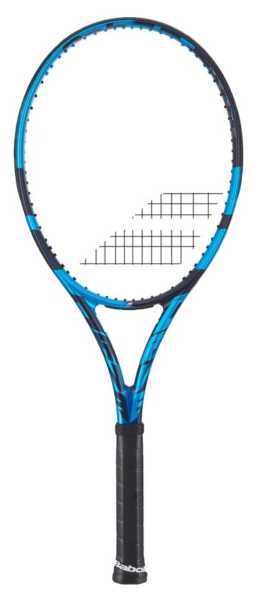
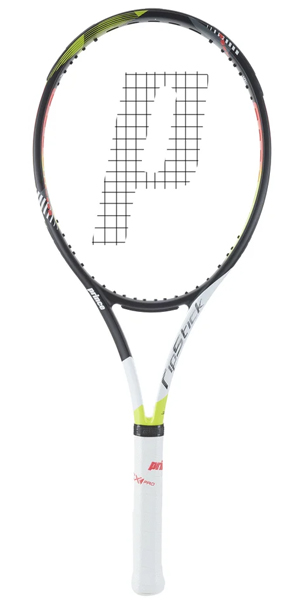
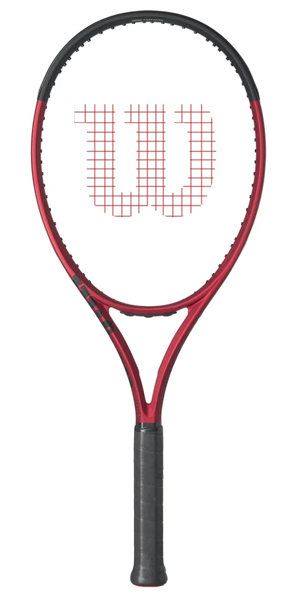
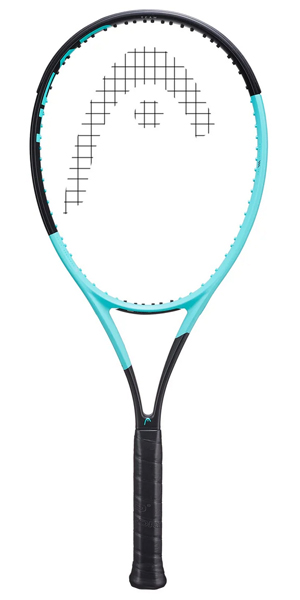
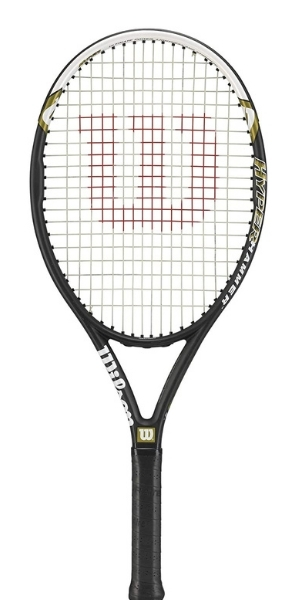
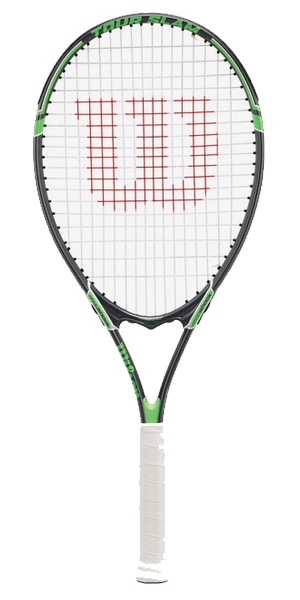

Female : Im a beginner , i have problems in nerves and muscles i cant use so much weight it hurts my wrist i tried the wilson pro with large grip it hurts i didnt like it .. which one do u recommend me ofcourse i want to progress as well
Hi Lula, I’d recommend the Head Boom Team L for you. It’s a lighter version of the Boom Team that I reviewed above so it should be easy to handle and will allow for improvement.
You can find it here: https://www.tennis-warehouse.com/Head_Boom_Team_L/descpageRCHEAD-BOOMTL.html?from=tribe